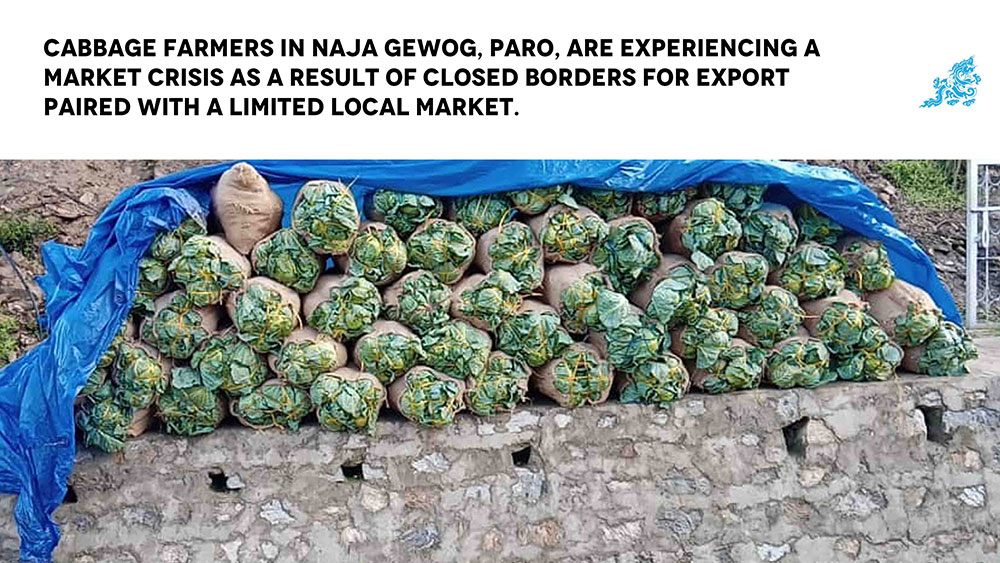… Agriculture ministry to open a collection point to help
Phub Dem
With the beginning of vegetable season, the cabbage capital of Paro, Naja gewog, is facing a market crisis again.
However, as an interim measure, the Ministry of Agriculture and Forest will set up a temporary collection point in Damchu to collect the vegetables and distribute them within the country starting Saturday.
According to Sanam Lyonpo (agriculture minister) Yeshey Penjor, the ministry helped sell the stocked cabbages at Centenary Farmers’ Market.
Considering the crowd at CFM and decongesting the market area to reduce possible transmission risk, the ministry will facilitate collection and distribution at Damchu.
Lyonpo said that the ministry would gradually ask private entities and State-Owned Enterprises to take over the role.
He said the government had to intervene during such an emergency as farmers are panicky and the export market is clogged. “Due to export issues, the farmers are facing difficulty in selling the product.”
Around this time last year, farmers faced a similar issue in exporting the vegetable due to border closure.
The pandemic is taking its toll on the farmers again.
Wangdi came with a bolero filled with cabbage to Thimphu on Monday. Without even selling a kilogram of cabbage, he returned home.
Initially, he planned to send the load to Phuentsholing, but he learnt that the export was on halt and the vegetables were rotting.
He said that there were 55 sacks of cabbage ready for sale in Wanaka, and if they failed to sell within a few days, the cabbage would rot.
Besides, a sack weighing between 30 to 35kg could fetch only Nu 300, he said, “It is a loss. But rather than letting it rot, I decided to explore the market.”
Wangdi said the local market couldn’t absorb cabbages from Naja as every household grows them on a commercial scale. “The only solution is to export it. Forget about profit; we can’t even meet the expenditure.”
Last year, the government addressed the issue through the Food Corporation of Bhutan’s buyback scheme.
Wanakha and Zursuna tshogpa, Jampel Dorji, said that it had been weeks since the farmers faced a similar challenge like last year.
He said that there was a boom in cabbage production, and the local market was limited.
Considering the inconveniences in selling the produce, Jampel Dorji said that farmers were not concerned about profit. “They just want to sell the stock and do not expect profit like last year.”
Last year, a kg fetched Nu 19.
He said that although it would benefit the farmers, the government might run into a loss.
Six years ago, lack of irrigation led villagers under Naja to switch to a more profitable practice—growing cabbage over paddy cultivation.
Since then, every farmer grows cabbage as it is far more lucrative.
Today the gewog is the largest cabbage producer in the dzongkhag, harvesting more than 1,200 metric tonnes (MT) a year.
Edited by Jigme Wangchuk
Every household under Wanakha- Zursuna chiwog grows cabbages in acres.
The farmers grow cabbage two times annually. Most farmers earn at least Nu 0.3 million (M) a year from selling cabbage.
Edited by Jigme Wangchuk


